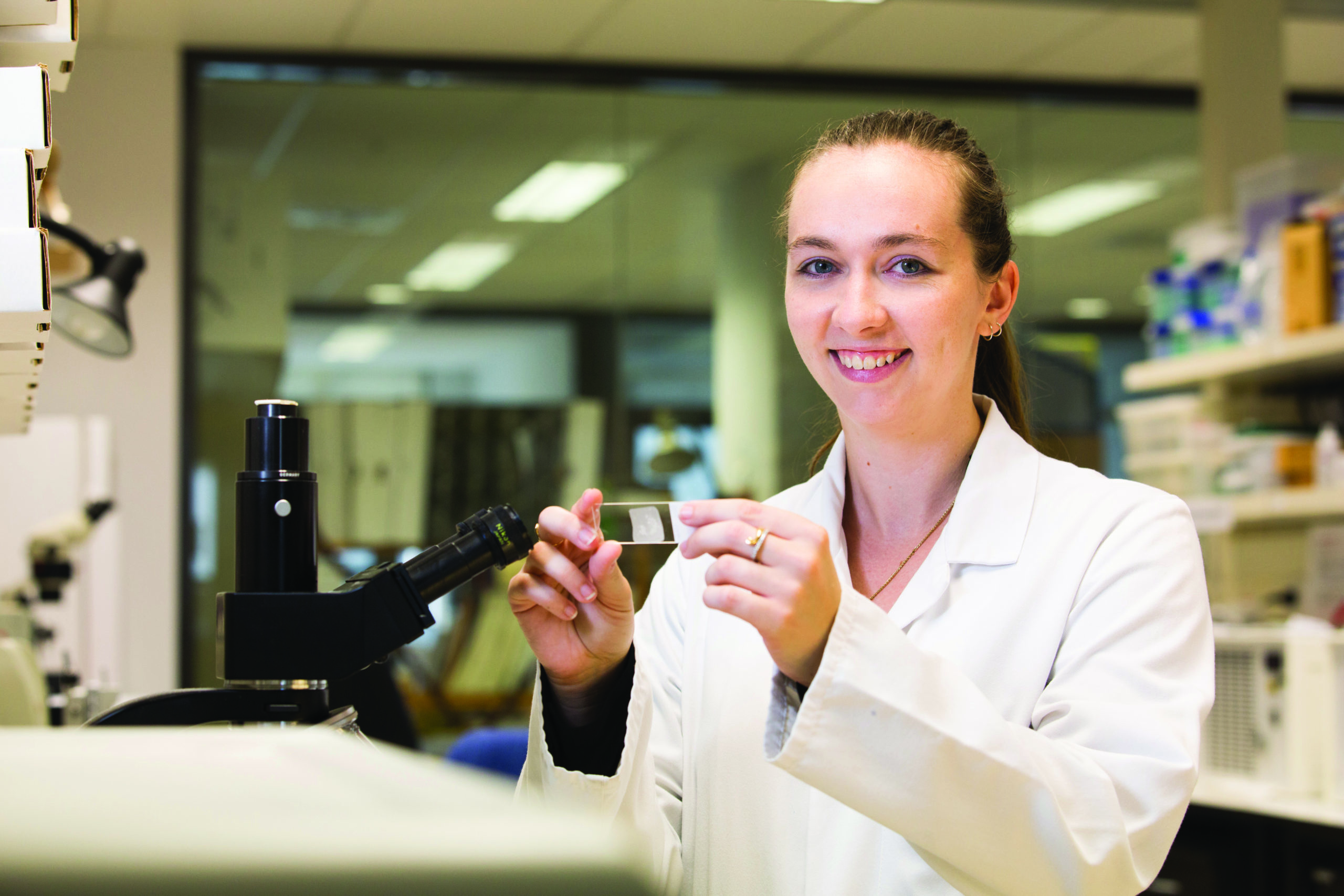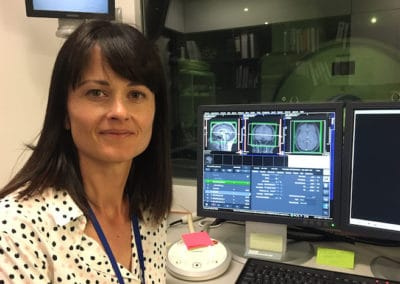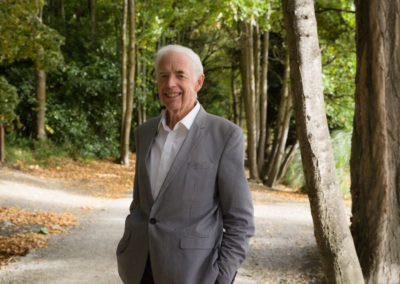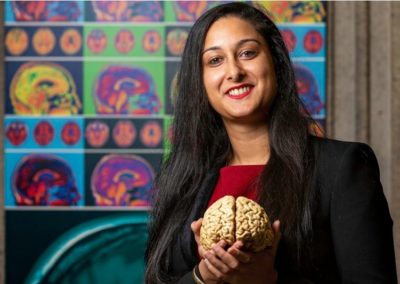Helen’s love for science started when she was very young, a spark ignited by her dad. “We would sit down and he would teach me about molecules as a little six year old,” Helen says. “I think that’s my earliest memory of science.” As a teenager, when her dad got sick and passed away, her interest turned to medical science – she needed to find out what was going on, what had gone wrong.
“I started biomedical science because I knew I didn’t want to be a doctor – I wanted to be on the other side, figuring things out,” she explains. During her degree, she attended one of Sir Richard Faull’s lectures and couldn’t help falling in love with neuroscience. Following this newfound passion led her to complete an Honours project with Sir Richard on a Huntington’s sheep model and a PhD with Prof. Maurice Curtis looking at plasticity in human Alzheimer’s disease brains.
Knowing that she wanted to keep doing research, Helen developed a proposal for a postdoctoral fellowship with the support of Maurice and Dr Leonardo Belluscio from the National Institutes of Health in the USA. In 2017, she was awarded the BRNZ Health Education Trust (HET) Alzheimer’s Postdoctoral Fellowship, which is generously funded by the HET and provides three years of support for her work.

 Helen’s project is looking at one of the earliest changes in Alzheimer’s disease – the loss of smell, which precedes the characteristic symptoms of memory loss by many years. “There is a really short pathway between the brain and the nose and thus, the environment,” Helen explains. “The hypothesis is that environmental insults could induce toxic proteins to form in the cells of our nose that may access the brain through the olfactory system and then spread to deeper regions involved in memory function.” Helen is looking at human olfactory bulbs with different grades of amyloid pathology and a transgenic mouse model that specifically produces beta-amyloid in the olfactory sensory neurons. She is also taking MRI scans of mouse and human olfactory tissue to perform high-resolution structural assessment of the human olfactory bulb – a worldwide first!
Helen’s project is looking at one of the earliest changes in Alzheimer’s disease – the loss of smell, which precedes the characteristic symptoms of memory loss by many years. “There is a really short pathway between the brain and the nose and thus, the environment,” Helen explains. “The hypothesis is that environmental insults could induce toxic proteins to form in the cells of our nose that may access the brain through the olfactory system and then spread to deeper regions involved in memory function.” Helen is looking at human olfactory bulbs with different grades of amyloid pathology and a transgenic mouse model that specifically produces beta-amyloid in the olfactory sensory neurons. She is also taking MRI scans of mouse and human olfactory tissue to perform high-resolution structural assessment of the human olfactory bulb – a worldwide first!
Ultimately, Helen’s research will contribute to understanding how the disease actually starts and progresses. “From everything we know about Alzheimer’s, it’s not something that we’ll be able to easily cure. What we need to do is prevent the disease from taking hold – which is why it’s so important to figure out what is happening at the start.”
The search for answers has brought Helen all the way to the National Institutes of Health (NIH) in Washington, DC, where she now works with the transgenic mice and high-field MRI in Dr Alan Koretsky’s lab. There, she not only gets to use cutting-edge technology and benefit from intensive training, but she is also exposed to a different approach to research. “It’s shaping the way I think about science,” she says. “It’s challenging me to ask bigger questions and it’s made me realise that I’m capable of a lot more than I thought.”
Helen spends around half of the year at the University of Auckland, and it’s New Zealand where she wants to be in the long term. While this international project comes with challenges, she would not have it any other way: “It’s the best of both worlds. I’m still immersed in the New Zealand research community, but I’m also at the NIH getting this amazing experience in an international lab. I’m growing my science and am able to bring it back to New Zealand.”
Being part of BRNZ allows Helen to do exactly that. As a member of the Early Career Advisory Group, she helps to grow the research community within our research centre and New Zealand as a whole. “It’s the perfect fit for what I was hoping to get out of this fellowship,” she says. “It’s nice to be able to jump in and give back a little bit.”



